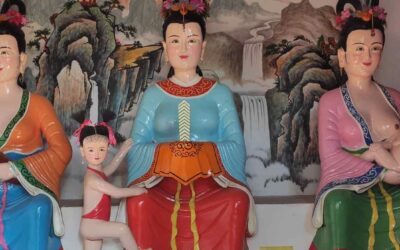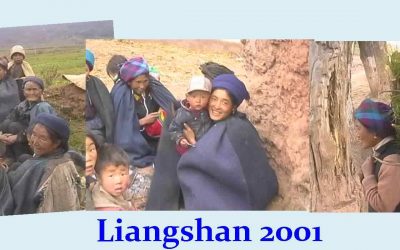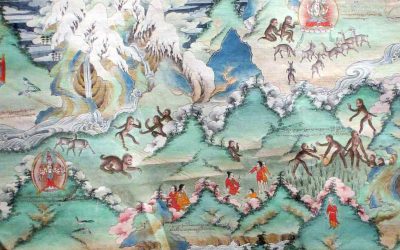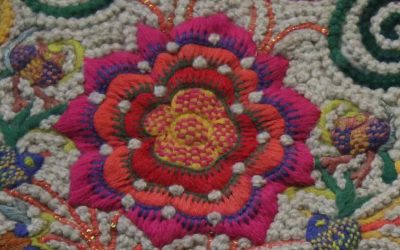Life of Milarepa, the hermit poet.
MiIarepa is one of the most beloved religious leaders of Tibet. His story, full of unique facts, has been told again and again over the centuries, and if the publishers did not warn that this is the autobiography written by the holy monk and religious reformer, the reader would think he was reading a novel, for certainly, the events of Milarepa’s life are more like a literary fable than the biography of a saint.
The first years of his life are a pure tragedy, for after losing his father when he was still a child, he saw how the uncle who should take care of them seizes all the property leaving him with his mother and sister in precarious conditions. An attempt to regain what is theirs ends up condemning them to an even more miserable life. Unable to bear such an outrage, the mother uses her last savings to send Milarepa to study magic. He does so with so much success that soon after he is able to exact the desired revenge, causing disgrace to his uncle’s family, and ruin to many of the neighbors who let him take possession of his family’s wealth.
But Milarepa is not satisfied, he has acted wrongly and only wishes to find a teacher to show him the way to Buddhahood. So he hears about Marpa, a disciple of the sage Naropa and founder of the Kagyupa school in Tibet. Marpa also knows from his omens that Milarepa will become his successor and the true prophet of the school, but even so, he does not show his enthusiasm but subjects Milarepa to one test after another, always putting the teachings of his secret formulas a little further away.
The trials that Milarepa must overcome test his pride and capacity for work and sacrifice. When he is on the verge of collapse, he always counts on the help of Marpa’s wife. After overcoming one trial after another, and spending long years in Marpa’s company, he finally receives his teachings, which are only the prologue to the life as a hermit that he will experience for the rest of his life. Meditating for years, he takes Marpa’s teachings to heart.
The separation comes when he dreams of his mother and decides to return to his homeland. His house is in ruins, and inside it the remains of his mother, after providing her a funeral he gives his goods to his enemies and takes refuge in solitary meditation.
His life is pure meditation and pure asceticism, surviving sometimes by eating nettles and other times with food given to him by hunters or pilgrims. A new encounter with his sister and a childhood friend only serves to reaffirm him in his life devoid of all material comfort. The women’s attempts to make him wear something more than rags, and eat a little better, are answered by Milarepa’s mockery.
The narrative is told in the first person, as he recounts his experiences at the request of his disciples, so the reader assumes that he has already become a revered religious leader. His life as a hermit is still as austere and his contempt for the conventions of the world leads him to death, an end from which he does not want to free himself because he considers that the end of his life has already come.
The last pages end with some admonitions that for Christians awaken strange parallelisms with those of Jesus Christ, for after exhorting his disciples to prayer:
«Pray wherever you are. Wherever you pray in faith, I will be among you. You shall obtain whatever you ask.»
His greatest desire is to bear the sins of mankind:
«May the sins of all beings be blotted out
by the virtue of my merits
and by that of the Buddhas of the three epochs.
May all your sorrows
Fall on my back and be erased by me.
I feel pity for him who offends
His master, his mother, and his brother.
May the punishment of his conduct
fall on my back and be wiped out by me.»
After his death, a series of celestial prodigies follow, signaling that a saint has indeed died.
The Kagyupa school is the third most important in Tibet. Its foundations were taught by Naropa to Marpa, who translated them and took them to Tibet. Milarepa was Marpa’s main disciple. Milarepa is famous for his life as a hermit, the extremes of whose dedication are shown in this book, and his poetry, his chants having been translated into all the major languages.
The most important characteristic of the Kagyupa doctrine is that they believe that enlightenment can be attained in a single life rather than through a long process of reincarnations. They follow the example of the historical Buddha advocated by the great yogi Tilopa, who lived in India in the 11th century. To achieve this goal, the adepts must be instructed by a master and practice meditation under his guidance. Because both activities lead to the discovery of the true nature of the mind, and from there to liberation.
Last posts
The Local Lords cult of the Bai nationality
The worship of the Local Lords (benzhu) is the most characteristic of the Bai people. Their religious life revolves around the Benzhu temple of each village, as each village venerates a local lord, sometimes a historical figure who sacrificed for the people. In other...
The tiger hero of the Naxi
The tiger hero of the Naxi[1] A long time ago, a man named Gaoqu Gaobo lived in the Baoshan area. He had a strong body, lively intelligence, and certain magical powers. He was always willing to help people. One day he went on a trip with a group of villagers. After a...
Wonderful- yaks most precious treasure is their manure
Wonderful- yaks most precious treasure is their manure Most of the travelers who visited Tibet in former times noticed the importance that, for the maintenance of the living of the Tibetan nomads and travellers, had the Yak manure, known among the...
The first description of the Religion of the Yi
The first description of the Religion of the Yi By Father François Louis Crabouillet in 1872. The religion of the Lolos[i] is that of sorcerers: it consists only of conjurations of evil spirits, according to them, the only authors of evil. Without being devout like...
Tibetans, the people who descend from the monkey
Tibetans, the people who descend from the monkey According to an ancient myth, the Tibetans originated from the union of an ogress (raksasi) and a monkey. The monkey was sent by Avalokitesvara, Mother Buddha, to sow the seed of Buddhism in these lands. One day, an...
The sung funeral of the Kucong of China
The sung funeral of the Kucong Among the Kucong, one of the peoples who have most persistently maintained their isolation in the mountainous areas on the border of China and Laos, the different stages of the funeral are celebrated through music, which gives the...










